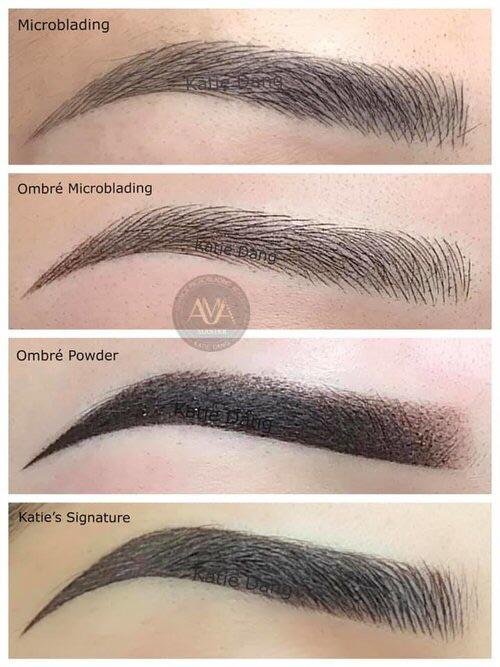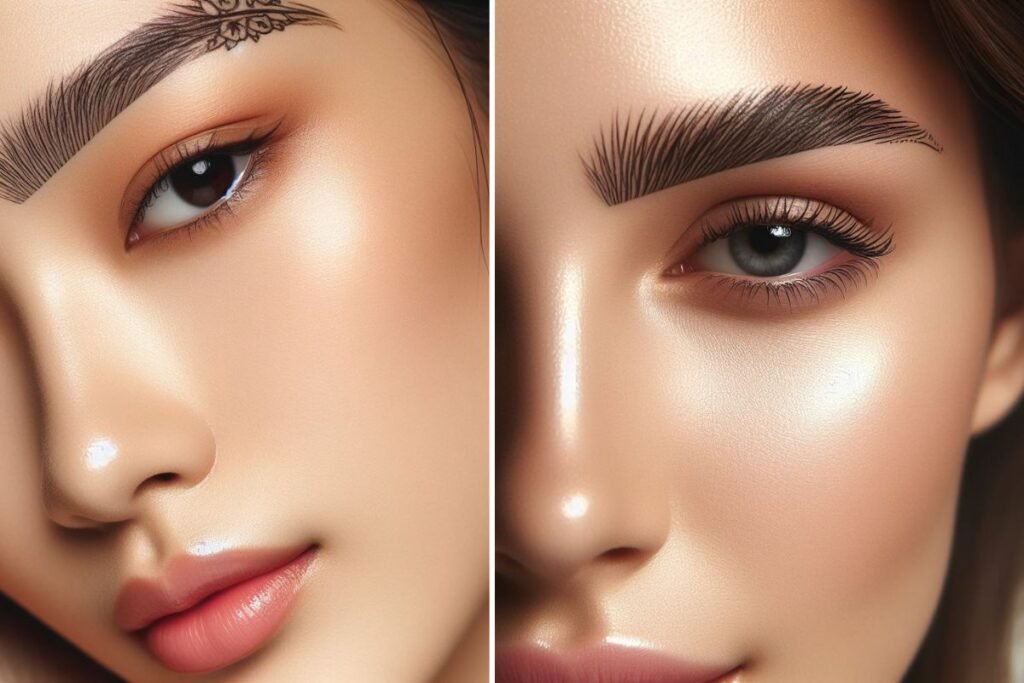Microblading primarily consists of three types: traditional microblading, ombre microblading, and combination microblading. Traditional microblading involves creating hair-like strokes, while ombre microblading results in a soft, shaded brow look.
Combination microblading is a mix of both techniques for a more natural appearance. Microblading is a popular semi-permanent makeup technique that enhances eyebrows by creating small, precise hair-like strokes using a manual hand tool and pigment. This type of cosmetic tattooing is designed to give the eyebrows a fuller, more defined look and is suitable for those looking to improve the appearance of thin or sparse brows.
With different types of microblading available, individuals can choose the technique that best suits their desired eyebrow style.
Contents
Understanding Microblading Techniques
Traditional Microblading
Traditional microblading is the classic technique used to create natural-looking eyebrows using a handheld microblade. The trained technician strategically implants pigment strokes into the skin’s upper layers to mimic the appearance of individual brow hairs. This method is perfect for individuals seeking a defined, yet subtle, enhancement of their eyebrows.
Microshading
Microshading utilizes a stippling method to produce a soft, powdered effect that resembles eyebrow makeup. This technique involves the application of pigment in a gradient pattern, resulting in a more filled-in appearance, similar to the use of an eyebrow pencil or powder. It is ideal for those desiring a more dramatic, defined look to their eyebrows.
Combination Brow
The combination brow technique combines traditional microblading with microshading to provide the best of both worlds. This method creates hair-like strokes while also incorporating a light shading effect to add depth and dimension to the brows. It caters to individuals who desire a balanced and natural-looking enhancement.

Factors Influencing Microblading Type Choice
Factors influencing microblading type choice play a crucial role in achieving the perfect eyebrow enhancement. Understanding these factors, such as skin type and tone, hair type, and desired look, can help determine the most suitable microblading technique for each individual. By considering these influential factors, individuals can make informed decisions that cater to their specific needs and preferences.
Skin Type And Tone
Skin type and tone are essential considerations when selecting the appropriate microblading method. The pigment used in microblading should complement the individual’s skin tone to create natural-looking, harmonious brows. For example, individuals with fair skin may require a softer pigment, while those with darker skin tones may benefit from a slightly darker shade. Additionally, sensitive skin types may require special attention during the microblading process to prevent adverse reactions.
Hair Type
Hair type influences the choice of microblading technique as it determines the density and natural flow of the eyebrows. Fine, sparse hair may benefit from techniques that create a fuller appearance, while those with thicker, coarser hair may require different methods to achieve a balanced aesthetic. Understanding the natural hair quality allows for the selection of a microblading method that complements and enhances the individual’s unique features.
Desired Look
Desired look is a crucial factor in determining the most suitable microblading type. Whether the aim is to achieve fuller, bolder brows or a more natural, subtle enhancement, the desired outcome influences the choice of technique and pigment. Customizing the microblading approach based on the individual’s preferences ensures that the final result aligns with their aesthetic goals, enhancing their overall appearance and confidence.
Pros And Cons Of Different Microblading Types
When it comes to achieving the perfect eyebrows, microblading has become a popular choice for many individuals seeking a semi-permanent solution. There are different types of microblading techniques available, each with their own set of pros and cons. Understanding the varying aspects of durability and retention, appearance and texture, as well as pain level and healing process, will help you make an informed decision before getting microblading done.
Durability And Retention
When it comes to durability and retention, different types of microblading offer varied longevity and effectiveness. Here’s a breakdown:
- Machine Microblading: This technique tends to have longer durability and retention due to the deeper implantation of pigment into the skin.
- Manual Microblading: While the manual method may require more frequent touch-ups, it offers a natural and subtle look that some individuals prefer.
Appearance And Texture
Focus on the appearance and texture reveals unique characteristics of each microblading type. Here’s what you should know:
- Machine Microblading: Results in a more uniform and consistent appearance, ideal for those seeking a bolder and more defined look.
- Manual Microblading: Known for creating fine, crisp, and individual hairstrokes, this method offers a more organic and realistic appearance.
Pain Level And Healing Process
Understanding the pain level and healing process associated with different microblading types helps in managing expectations better. Here’s what you need to consider:
- Machine Microblading: Typically causes less discomfort during the procedure, with a slightly quicker healing process due to the depth at which the pigment is implanted.
- Manual Microblading: May involve a bit more discomfort during the process, and the healing period could be slightly longer than machine microblading.
Choosing The Right Type For You
Consultation With A Professional
Before undergoing microblading, it is crucial to consult with a professional to determine the right type for your needs. A professional will evaluate your facial features, skin tone, and overall aesthetics to recommend the most suitable microblading technique. Additionally, they will consider any previous cosmetic procedures or underlying skin conditions that may affect the outcome.
Client Experience And Recommendations
Client experience and recommendations play a significant role in choosing the right type of microblading. Seek out reviews and testimonials from individuals who have undergone the procedure to gain insight into their experiences with different microblading techniques. Recommendations from trusted friends or family members who have achieved desirable results can also be invaluable in making an informed decision.
Maintaining And Enhancing Microbladed Brows
When it comes to achieving and maintaining perfect brows, microblading has become a game-changer. This semi-permanent technique offers various types that cater to different brow needs, ensuring that you achieve the perfect look you desire. It’s essential to understand the different types of microblading to ensure you choose the right one to maintain and enhance your microbladed brows effectively. Let’s explore how to keep your microbladed brows looking fabulous with proper aftercare, touch-up, and maintenance.
Aftercare Tips
Aftercare for microbladed brows is crucial for the healing process and long-lasting results. Here are some essential aftercare tips to ensure optimal healing and pigment retention:
- Keep the brow area clean and dry for the first 5-10 days.
- Avoid touching or picking at the treated area to prevent infections and color loss.
- Avoid direct sun exposure and excessive sweating until fully healed.
- Avoid using makeup or skincare products on the treated area during the healing period.
- Apply the prescribed aftercare ointment as directed by your microblading artist.
Touch-up And Maintenance Schedule
Touch-ups are essential for maintaining the shape, color, and overall appearance of your microbladed brows. Here’s a typical touch-up and maintenance schedule to keep your brows looking fresh:
- Schedule a touch-up appointment 4-6 weeks after the initial microblading session to fill in any areas with inconsistent pigment retention.
- Regular touch-up sessions every 12-18 months help maintain the color and shape of your brows, ensuring long-lasting results.
Conclusion
In sum, the different types of microblading offer unique solutions for enhancing and shaping eyebrows. From powder to hairstroke microblading, each technique provides distinct results to cater to individual preferences. Understanding these variations can help clients make informed decisions and achieve the perfect brows they desire.
Embracing the right microblading technique can result in natural-looking, long-lasting results that boost confidence and simplify daily beauty routines.

